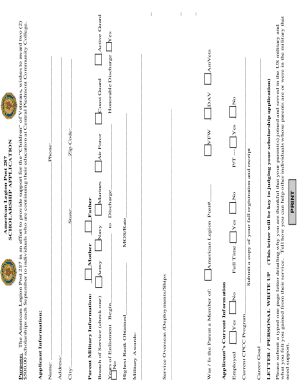US Army Branches Explained

Introduction to the US Army Branches

The United States Army is one of the most powerful and respected military forces in the world. It is divided into several branches, each with its own unique responsibilities and specialties. Understanding the different branches of the US Army can be helpful for those interested in joining the military, as well as for anyone looking to learn more about the inner workings of the Army. In this article, we will delve into the various branches of the US Army, exploring their roles, responsibilities, and requirements.
Overview of the US Army Branches

The US Army is composed of several branches, including the Infantry, Armor, Artillery, Engineer, Signal, and Quartermaster branches, among others. Each branch has its own distinct mission and set of responsibilities, and soldiers are assigned to a particular branch based on their skills, training, and expertise. The different branches work together to ensure the effective operation of the Army, and each plays a critical role in supporting the overall mission of the military.
Infantry Branch

The Infantry branch is the backbone of the US Army, and its primary responsibility is to engage and defeat enemy forces on the ground. Infantry soldiers are trained to operate in a variety of environments, from urban centers to rugged terrain, and are equipped with a range of weapons and equipment to support their mission. The Infantry branch is divided into several specialties, including: * Rifleman: trained to engage enemy forces with small arms and other weapons * Machine Gunner: responsible for operating and maintaining machine guns and other heavy weapons * Mortarman: trained to operate and maintain mortars and other indirect fire systems
Armor Branch

The Armor branch is responsible for operating and maintaining the Army’s fleet of tanks and other armored vehicles. Armor soldiers are trained to conduct armored reconnaissance, provide security, and support infantry operations. The Armor branch is divided into several specialties, including: * Tank Commander: responsible for commanding and operating tanks in combat * Cavalry Scout: trained to conduct reconnaissance and gather intelligence on enemy forces * Armored Crewman: responsible for operating and maintaining armored vehicles
Artillery Branch

The Artillery branch is responsible for providing indirect fire support to infantry and armor units. Artillery soldiers are trained to operate a range of artillery systems, including howitzers, cannons, and rocket launchers. The Artillery branch is divided into several specialties, including: * Field Artilleryman: trained to operate and maintain artillery systems * Fire Support Specialist: responsible for coordinating and directing artillery fire * Ammunition Handler: responsible for handling and storing artillery ammunition
Engineer Branch

The Engineer branch is responsible for providing engineering support to the Army, including the construction and repair of roads, bridges, and buildings. Engineer soldiers are trained to operate a range of equipment, including bulldozers, cranes, and excavators. The Engineer branch is divided into several specialties, including: * Combat Engineer: trained to conduct engineering operations in combat environments * Construction Engineer: responsible for constructing and repairing buildings and infrastructure * Geospatial Engineer: trained to collect and analyze geospatial data to support Army operations
Signal Branch

The Signal branch is responsible for providing communication and information systems support to the Army. Signal soldiers are trained to operate and maintain a range of communication systems, including radios, satellites, and computer networks. The Signal branch is divided into several specialties, including: * Signal Support Systems Specialist: trained to operate and maintain communication systems * Cyber Network Defender: responsible for defending Army computer networks against cyber threats * Information Technology Specialist: trained to operate and maintain Army information systems
Quartermaster Branch

The Quartermaster branch is responsible for providing logistical support to the Army, including the supply and maintenance of equipment and vehicles. Quartermaster soldiers are trained to operate a range of equipment, including forklifts, cranes, and trucks. The Quartermaster branch is divided into several specialties, including: * Supply Specialist: responsible for managing and maintaining Army supplies and equipment * Petroleum Supply Specialist: trained to manage and maintain Army fuel and petroleum systems * Aerial Delivery Specialist: responsible for conducting aerial delivery operations to support Army logistics
| Branch | Responsibilities | Specialties |
|---|---|---|
| Infantry | Engage and defeat enemy forces on the ground | Rifleman, Machine Gunner, Mortarman |
| Armor | Operate and maintain tanks and armored vehicles | Tank Commander, Cavalry Scout, Armored Crewman |
| Artillery | Provide indirect fire support to infantry and armor units | Field Artilleryman, Fire Support Specialist, Ammunition Handler |
| Engineer | Provide engineering support to the Army | Combat Engineer, Construction Engineer, Geospatial Engineer |
| Signal | Provide communication and information systems support to the Army | Signal Support Systems Specialist, Cyber Network Defender, Information Technology Specialist |
| Quartermaster | Provide logistical support to the Army | Supply Specialist, Petroleum Supply Specialist, Aerial Delivery Specialist |

📝 Note: The specialties and responsibilities listed above are not exhaustive and may vary depending on the specific needs of the Army.
In summary, the US Army is composed of several branches, each with its own unique responsibilities and specialties. Understanding the different branches and their roles can be helpful for those interested in joining the military, as well as for anyone looking to learn more about the inner workings of the Army. Whether you’re interested in the Infantry, Armor, Artillery, Engineer, Signal, or Quartermaster branches, there’s a place for you in the US Army.
What is the primary responsibility of the Infantry branch?

+
The primary responsibility of the Infantry branch is to engage and defeat enemy forces on the ground.
What is the role of the Armor branch in the US Army?

+
The Armor branch is responsible for operating and maintaining the Army’s fleet of tanks and other armored vehicles.
What are the different specialties within the Engineer branch?

+
The Engineer branch is divided into several specialties, including Combat Engineer, Construction Engineer, and Geospatial Engineer.



